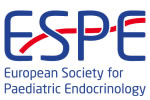hrp0089p2-p268 | Growth & Syndromes P2 | ESPE2018
A New Mutation in IHH Gene Causing Severe Short Stature
Festa Adalgisa , Luongo Caterina , Grandone Anna , Cirillo Grazia , Greco Federica , Torella Annalaura , Nigro Vincenzo , Giudice Emanuele Miraglia Del
hrp0086p2-p665 | Growth P2 | ESPE2016
Association between IGF-1 (Insulin-Like Growth Factor) SD Levels and Children with Growth Hormone Deficiency with and without Pituitary Morphological Abnormalities
Claudia Schmitt-Lobe Maria , Frare Dionara , Greco Rafael
hrp0092p2-21 | Adrenals and HPA Axis | ESPE2019
Fludrocortisone Treatment in a Child with Postural Orthostatic Tachycardia Syndrome (POTS): A Case Report
Varriale Gaia , Greco Marco , De Simone Luciano , Pozzessere Anna , Stagi Stefano
hrp0084p3-900 | Fat | ESPE2015
Predicting Early Cardiovascular Risk in Obese Children Based on Anthropometry
Cipollone Claudia , Piccorossi Alessandra , Antenucci Annarita , Greco Carla , Lasorella Stefania , Farello Giovanni
hrp0086p2-p834 | Syndromes: Mechanisms and Management P2 | ESPE2016
Auxological Features in Patients with Vernal Keratoconjunctivitis
Stagi Stefano , Pucci Neri , Del greco Paolo , Scalini Perla , Tubili Flavia , Pantano Stefano , de Martino Maurizio , Novembre Elio
hrp0082p2-d1-294 | Bone | ESPE2014
Determinants of Vitamin D Levels in Children and Adolescents with Down Syndrome
Stagi Stefano , Lapi Elisabetta , Scalini Perla , Greco Paolo Del , Ricci Franco , Marino Achille , de Martino Maurizio , Seminara Salvatore
hrp0082p3-d1-935 | Puberty and Neuroendocrinology | ESPE2014
An Unusual Case of Early and Accelerated Puberty
Scalini Perla , Stagi Stefano , Pelosi Paola , Ricci Franco , Anzillotti Giulia , Greco Paolo Del , Seminara Salvatore , de Martino Maurizio
hrp0086p2-p835 | Syndromes: Mechanisms and Management P2 | ESPE2016
Turner Syndrome: Does GH Treatment Influence Glucose Homeostasis?
Baronio Federico , Lupi Fiorenzo , Girtler Ylenia , Tamburrino Federica , Maltoni Giulio , Scarano Emanuela , Mazzanti Laura , Radetti Giorgio
hrp0082p1-d1-204 | Reproduction | ESPE2014
The Influence of GH Treatment on the Oral Disposition Index in Turner Syndrome Girls and in GH Deficient Children: 8 Years of Follow-Up
Baronio Federico , Lupi Fiorenzo , Siroli Benedetta , Longhi Silvia , Tamburrino Federica , Scarano Emanuela , Mazzanti Laura , Radetti Giorgio
hrp0084p2-305 | DSD | ESPE2015
‘www.steroidogenicfactor-1.info’: An Online Database of Variants in Steroidogenic Factor 1 (SF-1, NR5A1) and Resource for Families and Professional Healthcare Providers
Suntharalingham Jenifer , Buonocore Federica , Duncan Andrew , Achermann John



